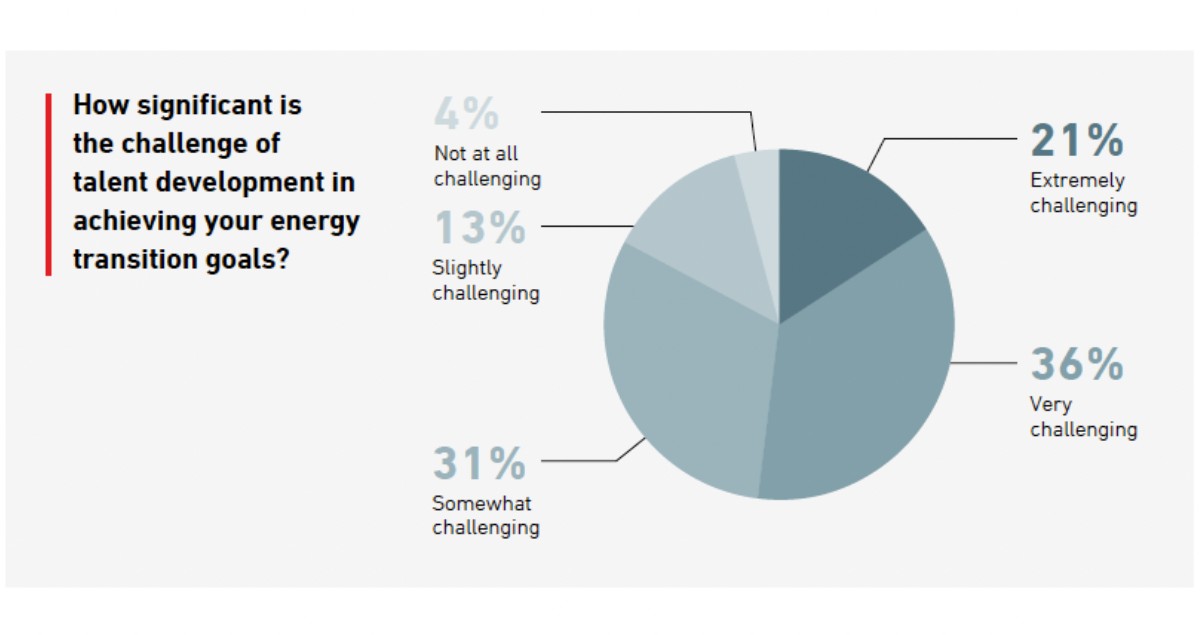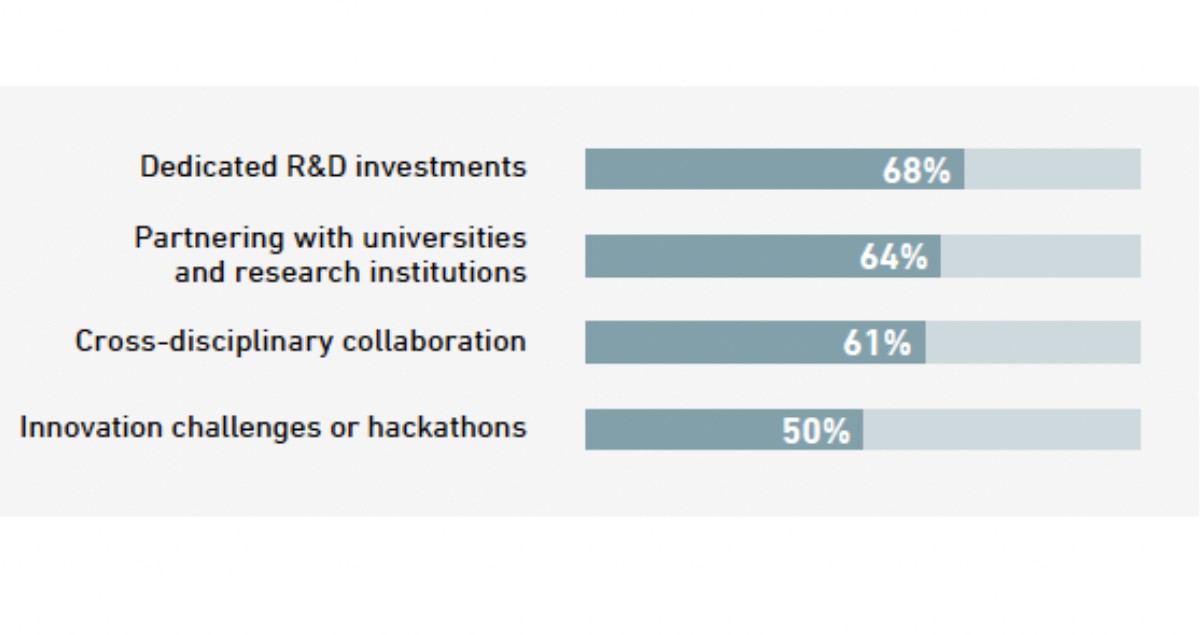Four Strategies for Tackling the Net-Zero Talent Challenge

Reaching net-zero emissions in time to limit the worst impacts of global warming will require technological innovation, strong leadership and creative problem-solving. In short, it will take human ingenuity to drive the energy transition forward and achieve this multifaceted but critical shift to a net zero-carbon future. For companies in the energy industry that are on the front lines of this transition, talent strategies are therefore a key factor in their organizational success.
But as any HR leader knows, recruiting and retaining top talent is no easy task — and C-level leaders across oil & gas, utilities and heavy industry also realize it is a serious challenge. In The MHI 2025 Energy Transition Leaders Survey, energy executives broadly acknowledge that talent development can be a stumbling block.
How significant is the challenge of talent development in achieving your energy transition goals?

Those same leaders are not sitting idly by, however; they are investing in talent in multiple ways. When asked about the most critical investments they are making in talent, over a third (31%) say building cross-functional teams, 29% say attracting new talent and 24% say upskilling their current employees.
Energy leaders clearly understand the need for top talent and that thoughtful strategies will find and retain it. By leveraging the following four strategies, organizations across the energy landscape can ensure they have the best and brightest to achieve their net-zero goals.
1. Promote cutting-edge solutions to attract new talent
Energy companies are not always viewed as the most innovative or exciting organizations. While this perception is outdated and perhaps unfair, the reality is that it acts as an impediment to attracting workers with green skills, especially from ‘Generation Z’.
Yet research by Linkedin shows that Gen Z workers are also passionate about tackling climate change. To compete with tech companies and other innovation-driven sectors, energy companies must lean into their net zero solutions and their role in decarbonizing the economy. Doing so can attract employees with green skills and younger workers in particular. By emphasizing how they are innovating to rise to the challenge of net zero emissions by 2050, energy companies can overcome entrenched opinions and show potential employees all the opportunities they can have to make a lasting impact.
2. Evaluate your recruiting tactics — and your company culture
Strategies to attract talent are both tactical and cultural. Partnering with universities and start-ups is a great way to build a pipeline, and giving employees time and space to experiment will drive creative problem solving. The first part is a tactic, but the second part involves a cultural shift to encourage experimentation.
For example, MHI is streamlining its R&D to inspire creativity with younger employees and be “faster than a start-up.” Giving employees opportunities to take chances, but also to fail fast, can result in better employee engagement as well as more breakthroughs in technologies and ideas that can benefit the business.
What strategies are you implementing to foster innovation within your teams? [1]

3. Avoid tunnel vision with employee skills
It is also important to pursue talent with a range of skills. Energy companies need workers with hard science expertise, like chemistry and geology, and, of course, engineering. But finance, procurement and life-cycle analysis capabilities are also valuable. Technical competencies in AI are growing more important every day. Soft skills like communication are also increasingly vital. The multifaceted nature of the energy transition means that diverse skill sets are essential for energy companies, so it is important to cast a wide net when recruiting talent.
4. Focus on upskilling for employee retention
The other part of the talent equation is for organizations to retain their existing workforce and build upon their employees’ skills. Utilities and oil & gas companies have some of the greatest needs for green skills, and they already have employees with transferable skills. Employees who already work with plant equipment at power generation sites, for example, can be trained in carbon capture, utilization and storage (CCUS) as this technology is implemented at more fossil fuel plants and industrial sites. Utilities also need workers with green skills to integrate more renewable energy sources, so upskilling those who are already familiar with electricity infrastructure is a win-win.
Providing pathways for growth and learning new skills is vital to keeping employees, yet recent research shows that fewer than half (43%) of employers are actively supporting career development. This matters for developing leaders as well — energy companies can and should foster the growth of their best and brightest to become the next generation of leadership. For this reason, MHI identifies high potential leaders early in their careers and provides tracking and training. These types of strategies build competence, loyalty and continuity for energy organizations.
Putting people first means long-term success
Simply put, investing in people will always pay off. Research shows that energy companies that build a strong employee value proposition (EVP) — through career development, culture, and, of course, compensation — have lower turnover rates than their competitors with a weaker EVP.
Some of the talent strategies listed above will take time to develop, such as cultural shifts or a change in leadership style. But all organizations in the energy industry are operating in a period of rapid change. From AI to renewables to communications, new capabilities are needed all the time, and as our survey results show, leaders in energy are not waiting for talent to come to them — they are working with partners and implementing new policies to attract the employees who will set them up for success in the decades to come.
For an endeavor as complex and varied as the energy transition, companies need the best talent across all sorts of skill sets, and investing in their workforce can make that goal a reality.
[1] Respondents could choose multiple answers
Learn more about The MHI 2025 Energy Transition Leaders Survey and its findings on leadership, partnership and talent in the race to net zero.





